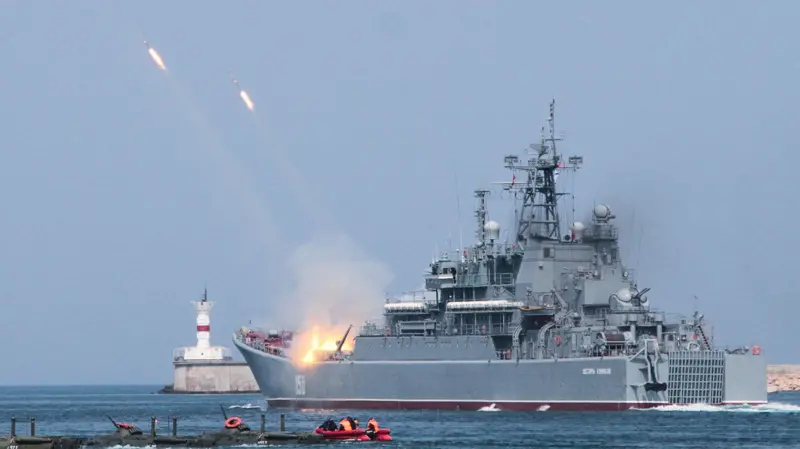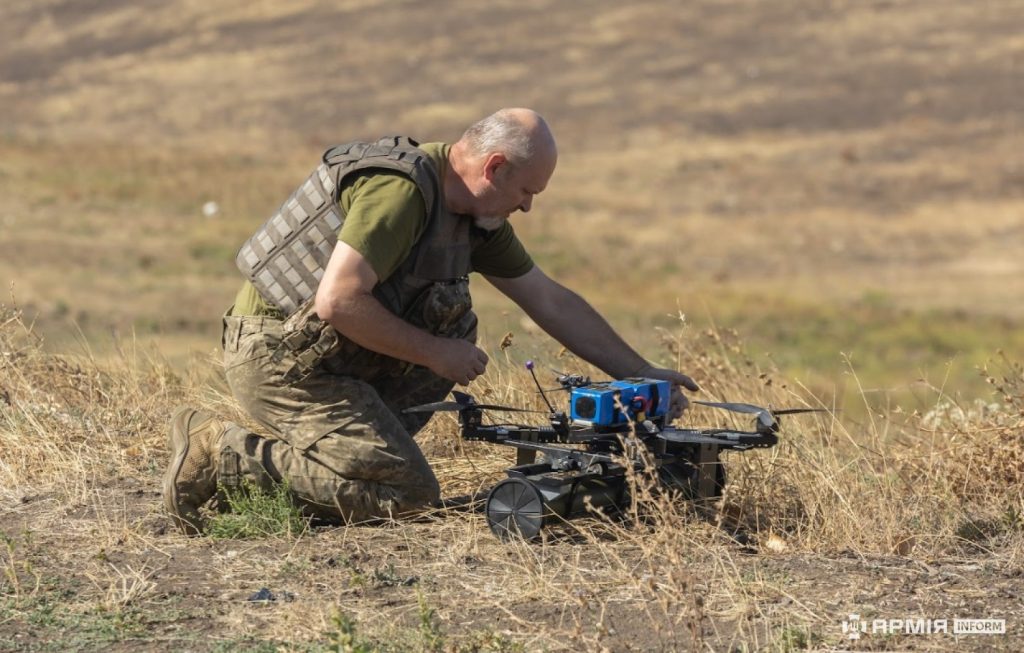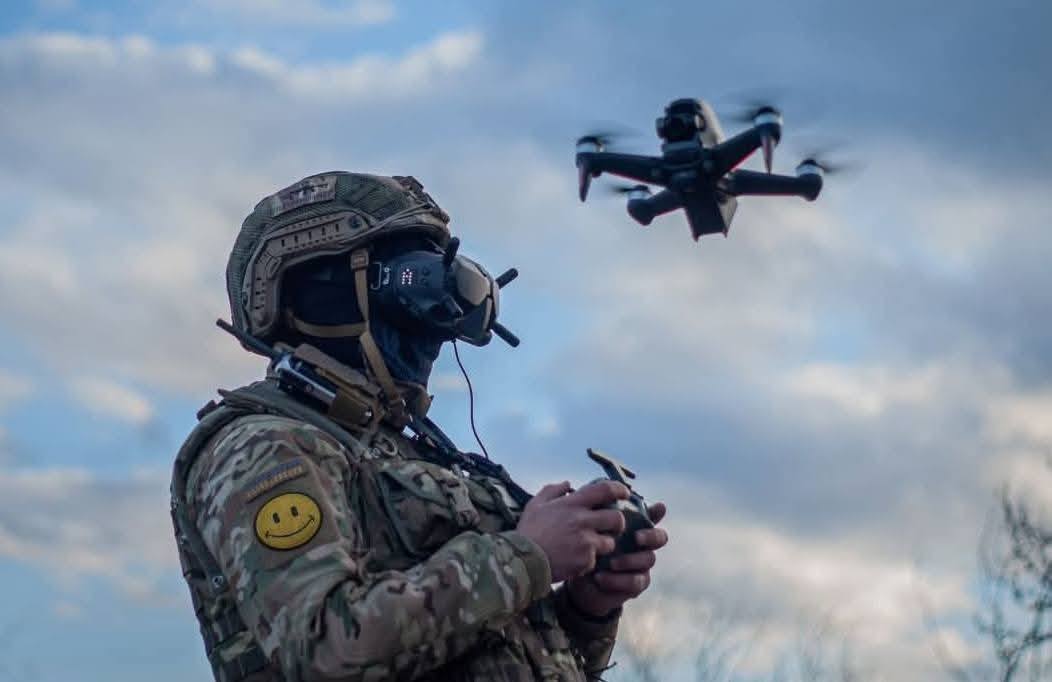Ukraine’s recent assault on airbases across Russia has already ushered in a new conventional wisdom: the expensive, human-crewed weapons (tanks, planes, ships) that have long defined the world’s “advanced” militaries have been rendered obsolete by inexpensive drones.
However, this view is incomplete, and perhaps dangerously misleading. Today’s drone warfare offers sobering lessons that go far beyond the vulnerability of expensive legacy weapons; and the looming integration of AI into drone warfare will make the current situation look positively quaint.
Consider the lessons of the Ukraine war so far. First, the impact of drones goes far beyond legacy weapons. Drones have indeed rendered tanks and armored personnel carriers extremely vulnerable, so Russian ground assaults now frequently use troops on foot, motorcycles, or all-terrain vehicles.
Yet this hasn’t helped, because drones are terrifyingly effective against people as well. Casualties are as high as ever, but now, drones inflict over 70% of casualties on both sides.
Drones are also effective against almost everything else. Ukraine has used drones to destroy Russian targets as varied as weapons factories, moving trains, ammunition stores, oil refineries, ships, and ports. It could be worse; in fact, Ukraine has shown great restraint, considering Russia’s barbaric conduct. Airport terminals, train stations at rush hour, athletic and concert stadiums, pharmaceutical factories, hospitals, schools, nursing homes — all are equally vulnerable.

Ukraine’s own drones crash Putin’s $7-billion “red lines” aircraft — while Russia fights them back with sticks
Two additional sobering lessons from Ukraine concern how drone warfare depends on its industrial base. First, speed and responsiveness are critical. Drone technology, weapons, and tactics now evolve at a blinding pace. A new drone will be useful for only 2-6 months. The other side develops countermeasures, requiring the development of new products, against which new countermeasures are developed, and so on.
At first, the drones used in Ukraine were crude weapons, radio-controlled by a pilot who needed to be nearby. As drones became more sophisticated and lethal, jamming was used to block their radio signals, which led to frequency changes and then frequency hopping, which was then countered by multi-frequency jammers, which then engendered drones that attack jamming equipment.
Then Russia developed drones controlled via fiber-optic cable — impervious to jamming. Ukraine tries to track the cable to its source and kill the pilots (with drones). Now Ukraine has fiber-optic drones, too.
Guidance is ever more sophisticated, so that drones can evade radar by flying very low or using stealth technology. But drone detection and tracking systems have also advanced, employing networks of cellphones and microphones connected to audio analysis software, as well as using Lidar, radar, and cameras.
In response, however, Ukraine’s drone industry and military developed a revolutionary model of weapons research and development, production, and deployment, based on direct, continuous communication between frontline units and drone producers.
Ukraine’s military command and Ministry of Digital Transformation have even developed a points-based system that publishes continuously updated rankings of military units’ performance based on verified drone kills.
Here, Ukraine benefited from having a strong startup ecosystem, which supports a weapons industry (with hundreds of companies) capable of designing, producing, and fielding a new weapon in a matter of weeks. This year, Ukraine will produce more than four million drones, most of them models that did not exist even a year ago. Unfortunately, Russia has adapted as well, also relying heavily on private startups.
Drone warfare in Ukraine provides yet another lesson for the United States and Europe: the need to address Chinese dominance of the global drone industry.Ukraine evolved its own drone industry because the US and NATO had almost none of their own, much less one with the speed and flexibility required, and because China has gradually tightened supplies to Ukraine in favor of Russia.
Some 80% of the electronics used in Russian drones are sourced from China. While Ukraine was initially highly dependent on China, it has reduced its reliance to perhaps 20%, most of that obtained covertly.
Yet US and European defense R&D and procurement remain slow and uncompetitive, which cripples their ability to defend against drones, as well as their ability to use them. Although few people realize it, the US and NATO now desperately need Ukraine for its drone expertise.
Ukraine is now the only country that could possibly match Chinese and Russian technology and reaction time in a war.Without Ukraine, and without modernizing their own forces, NATO and the US would suffer horrific casualties in a war with Russia or China — and might even lose.
Moreover, AI will change everything. Ukraine’s 1 June operation used 117 drones, each controlled by a skilled operator, and reports suggest that something like half were defeated by Russian defenses — jamming, mainly — because the drones needed to be in radio communication with their controllers. Had they been autonomous, there could have been a thousand of them.
And with AI, there is no need for pilot communication, and thus no effective jamming, greatly increasing drone range and lethality. Five years from now, it will be terrifyingly easy to launch preemptive strikes on conventional targets.
AI also increases the lethality and precision of drones used against people. Chinese researchers have already demonstrated drone swarms navigating through a forest and then re-forming as a swarm after passing through. This is not just about warfare; it also works for terrorist attacks.True, the required AI functionality still demands far more computing power and memory than can be put into a small drone. Nor is it cheap. Nvidia chips, for example, cost up to $50,000 each, so even one powerful AI processor would make most drones prohibitively expensive.

“Kill a navy for the price of a car”: Ukraine’s drones drove out Putin’s fleet from the Black Sea — then turned on his fighter jets
However, that’s changing fast, driven by the goal of putting serious AI capability into every phone. When that happens, those same capabilities will be available to every drone weapon. And with the sole, vital exception of AI processors, the entire supply chain for both phones and drone weapons is dominated by China.
Stuart Russell, an AI specialist at the University of California, Berkeley, has long argued for an arms-control treaty to prevent the spread of small, mass produced, AI-controlled drone weapons. He even underwrote the production of a short film, Slaughterbots, which dramatizes the risks these drones could pose in the wrong hands.
At a dinner years ago, he told me that it would soon be easy to target individuals using facial recognition or, say, everyone wearing a cross, a yarmulke, or any other religious or political symbol.
Since any meaningful treaty is unlikely in the current geopolitical environment, we must prepare for a world that probably will contain such weapons. But the Western defense establishment increasingly looks like the typical “legacy” company that has been caught off guard by technological disruption. In markets, legacy resistance can be costly, but the costs are purely monetary. In warfare, they can and will be deadly.
Read also
-
“Dudes with track pants and hunting rifles”: why Ukraine became the West’s most embarrassing blind spot
-
CIA helped forge Ukraine’s broken spy service into Mossad against Putin — now it can’t make them stop
-
A Russian drone flew into Ukraine’s “hidden” Krab gun — and exposed a billion-dollar flaw in artillery design





